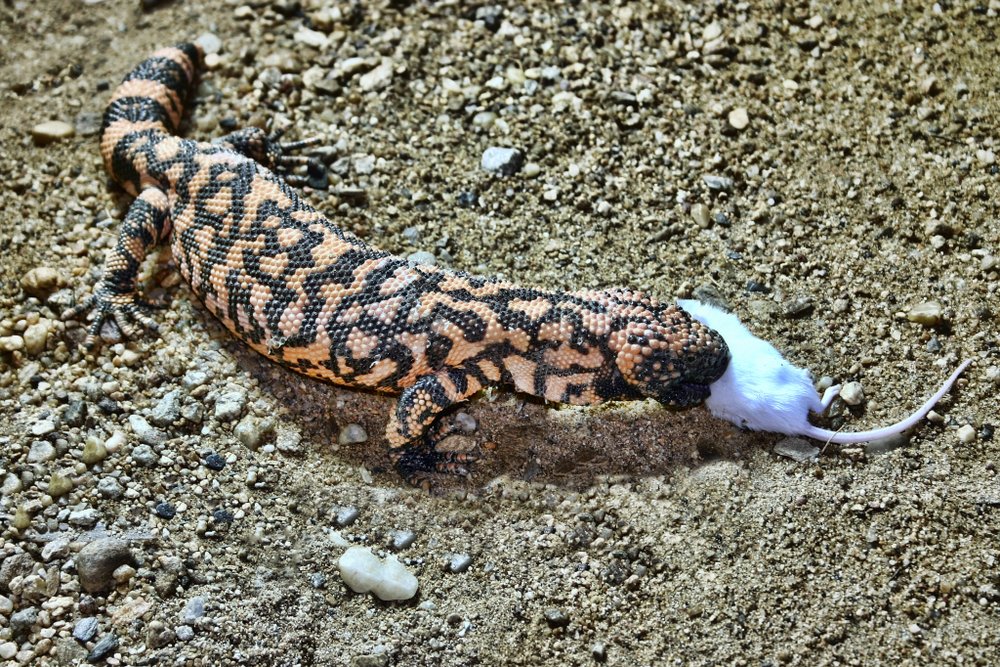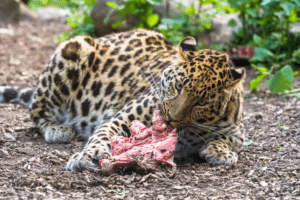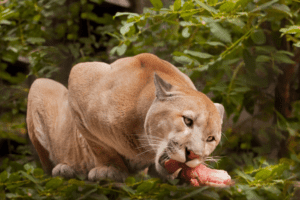A look on What Does The Gila Monster Eat? The Gila monster, also known as Heloderma suspectum, is a venomous lizard native to the southwestern United States and northern Mexico. It is one of only two venomous lizards in the world, with its venom being both neurotoxic and hemotoxic.
But what does this fascinating creature eat? Well, the Gila monster is primarily a carnivore, meaning it mostly feeds on other animals. However, it has also been known to occasionally consume plant material.
Some of the most common prey for Gila monsters include small mammals such as rodents and reptiles like snakes and lizards. They are also opportunistic feeders and will eat any animal that is small enough for them to overpower, including birds and their eggs, insects, and even other Gila monsters.
Table of Contents
What Does The Gila Monster Eat? Dietary Habits of Gila Monsters
Gila monsters are known for their slow metabolism, which means they don’t need to eat very often. In fact, they can survive on one meal every few weeks! This is because their prey items are often high in calories and nutrients, allowing them to go for extended periods without eating.
Their diet also varies based on the season. During the summer when food is more abundant, Gila monsters will consume larger and more frequent meals. However, during the winter when food is scarce, they will eat less and rely on stored fat reserves.
Unique Feeding Method

Unlike most lizards that use their tongues to detect prey, the Gila monster has a unique feeding method. They have an acute sense of smell thanks to their forked tongues, which they use to track down their prey. Once they locate their food, they will bite onto it and inject venom through their grooved teeth. The venom then immobilizes the prey, making it easier for the Gila monster to consume.
Hunting Behavior
Gila monsters are ambush predators, meaning they sit and wait for their prey to come to them. They have a keen sense of smell that allows them to detect prey from long distances. Once they locate a potential meal, they will pounce and use their powerful jaws and claws to subdue it.
In addition to their keen sense of smell and venomous bite, Gila monsters have other unique adaptations that help them capture prey. They are covered in short, sharp scales that give them a rough texture, making it difficult for prey to escape once they have been bitten. They also have powerful forelimbs with sharp claws that they use for digging after small mammals and reptiles that may hide in burrows.
While Gila monsters are primarily carnivorous, they have been observed consuming cactus fruits and other plant materials. This usually happens during the summer months when their prey is scarce. However, these instances are few and far between, and it is safe to say that Gila monsters are primarily carnivores.
Factors influencing the Gila monster’s diet
There are several factors that can influence the diet of Gila monsters. One significant factor is their habitat. These lizards primarily inhabit desert and scrubland areas, which have a limited amount of vegetation. As a result, prey items such as small mammals and reptiles are more abundant in these regions, making them an ideal food source for Gila monsters.
Another factor that can affect the Gila monster’s diet is the availability of water. These lizards live in arid environments and have adapted to survive on very little water. Therefore, they do not need to hunt near a water source, giving them the freedom to roam and hunt for prey anywhere within their habitat.
Climate is also a crucial factor that influences the Gila monster’s diet. During the winter months, when temperatures are low, these lizards will go into a state of hibernation. This means they will not be actively hunting and feeding, resulting in a decrease in their diet.
Dietary needs of Gila monsters in captivity

Gila monsters are fascinating creatures and, as a result, have become popular in the exotic pet trade. However, their unique dietary needs can make them challenging to care for in captivity. It is crucial to provide Gila monsters with a diet that mimics their natural feeding habits.
In captivity, Gila monsters should be fed a variety of insects and small rodents such as mice and rats. It is essential to feed them whole prey items, including fur, bones, and organs, as these are all important sources of nutrients for their health.
How Much Do Gila Monsters Eat?
As mentioned earlier, Gila monsters have a slower metabolism compared to other reptiles. This means they do not need to eat as often and can survive on one meal every few weeks. However, the amount of food a Gila monster needs depends on several factors such as its age, size, and activity level.
Younger Gila monsters may require more frequent feedings, while adults can go for longer periods without eating. It is essential to monitor their food intake and adjust accordingly based on their individual needs.

Are Gila Monsters Dangerous to Humans?
While the venom of Gila monsters can be harmful to humans, they are generally non-aggressive and will only bite if provoked. In fact, there have been very few reported cases of Gila monster bites in humans. They are shy creatures that prefer to avoid confrontation and typically only use their venom as a defense mechanism.
Read Also: What Do Geeze Eat In The Water?





